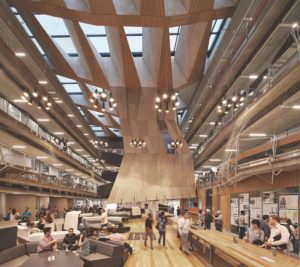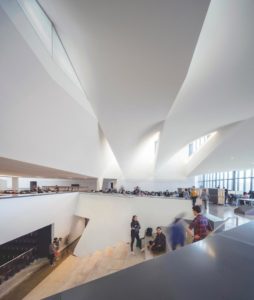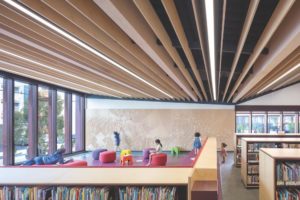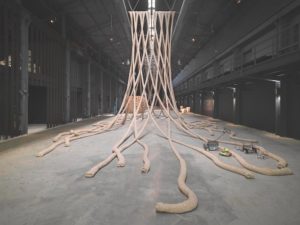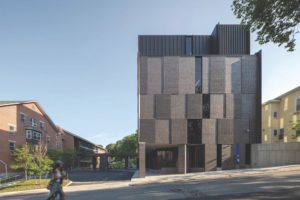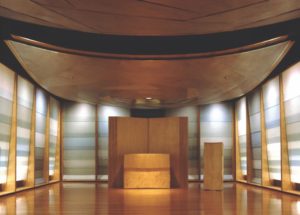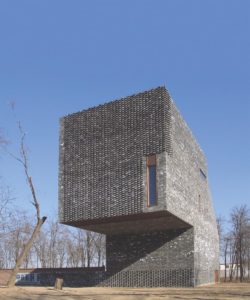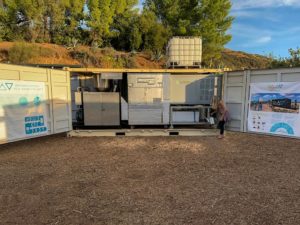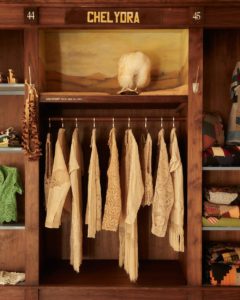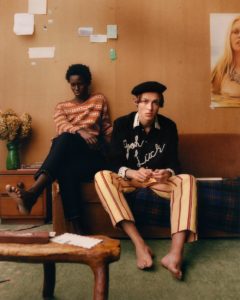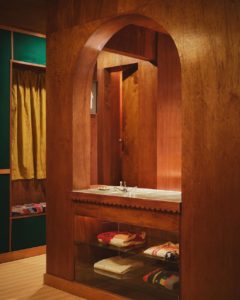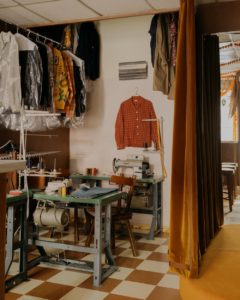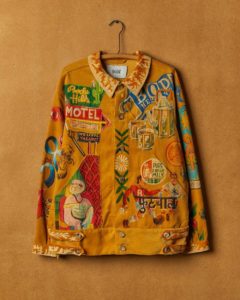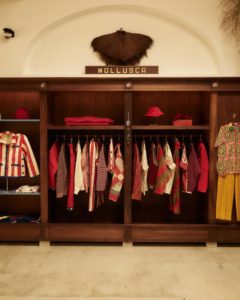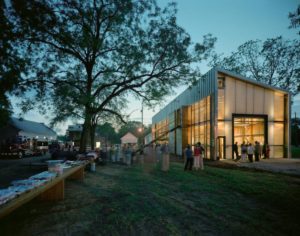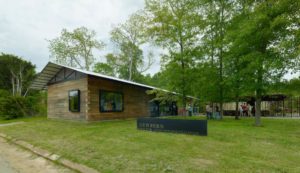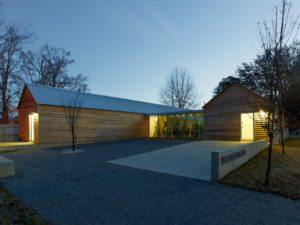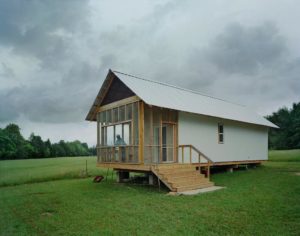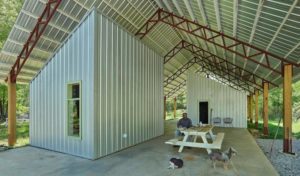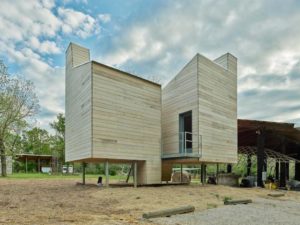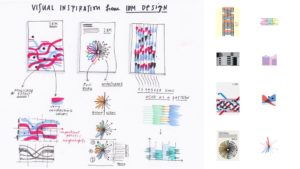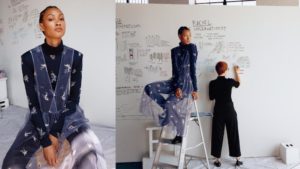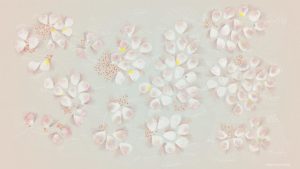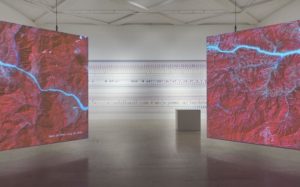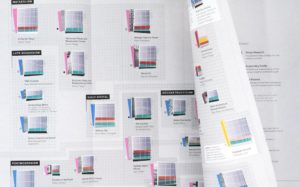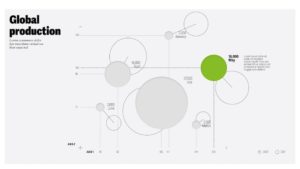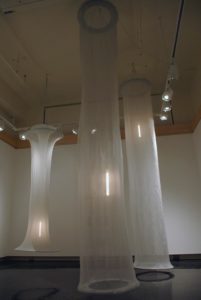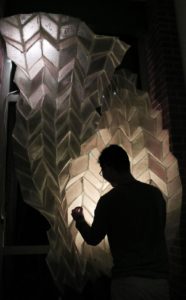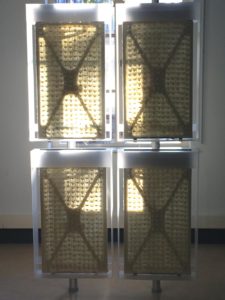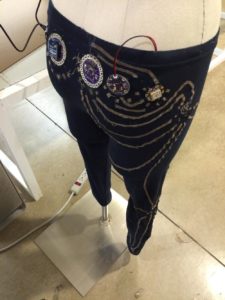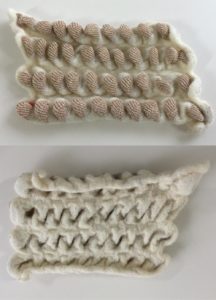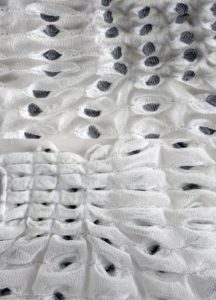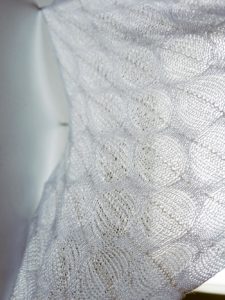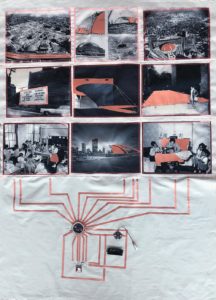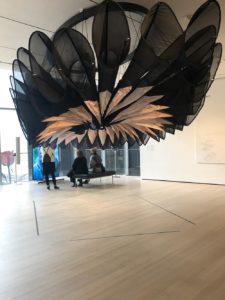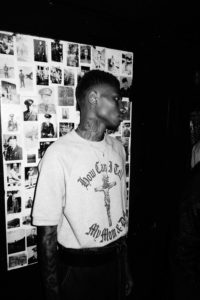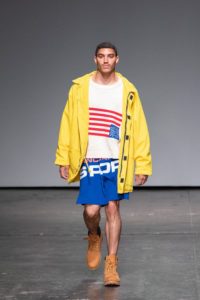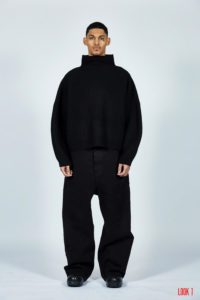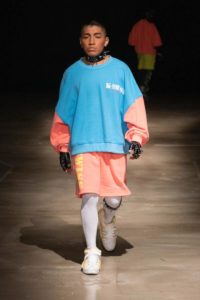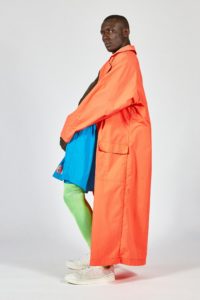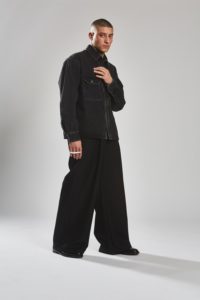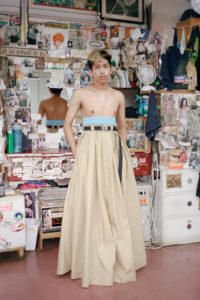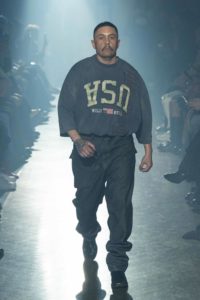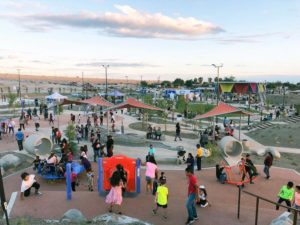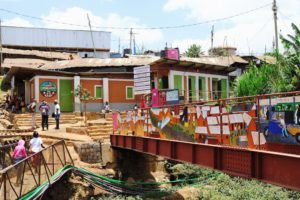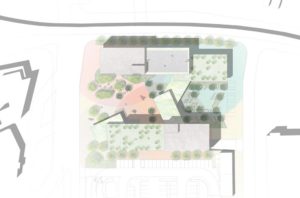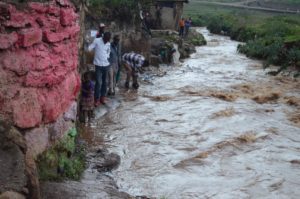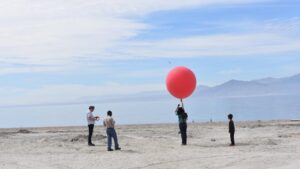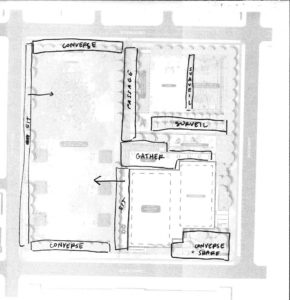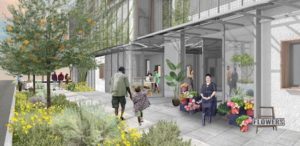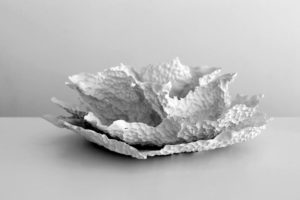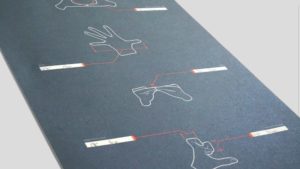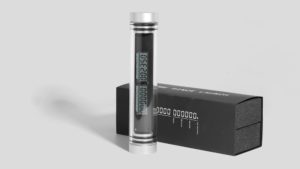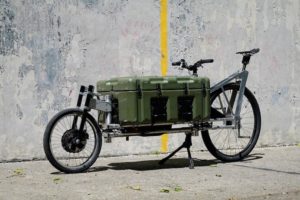2022 National Design Award Winners
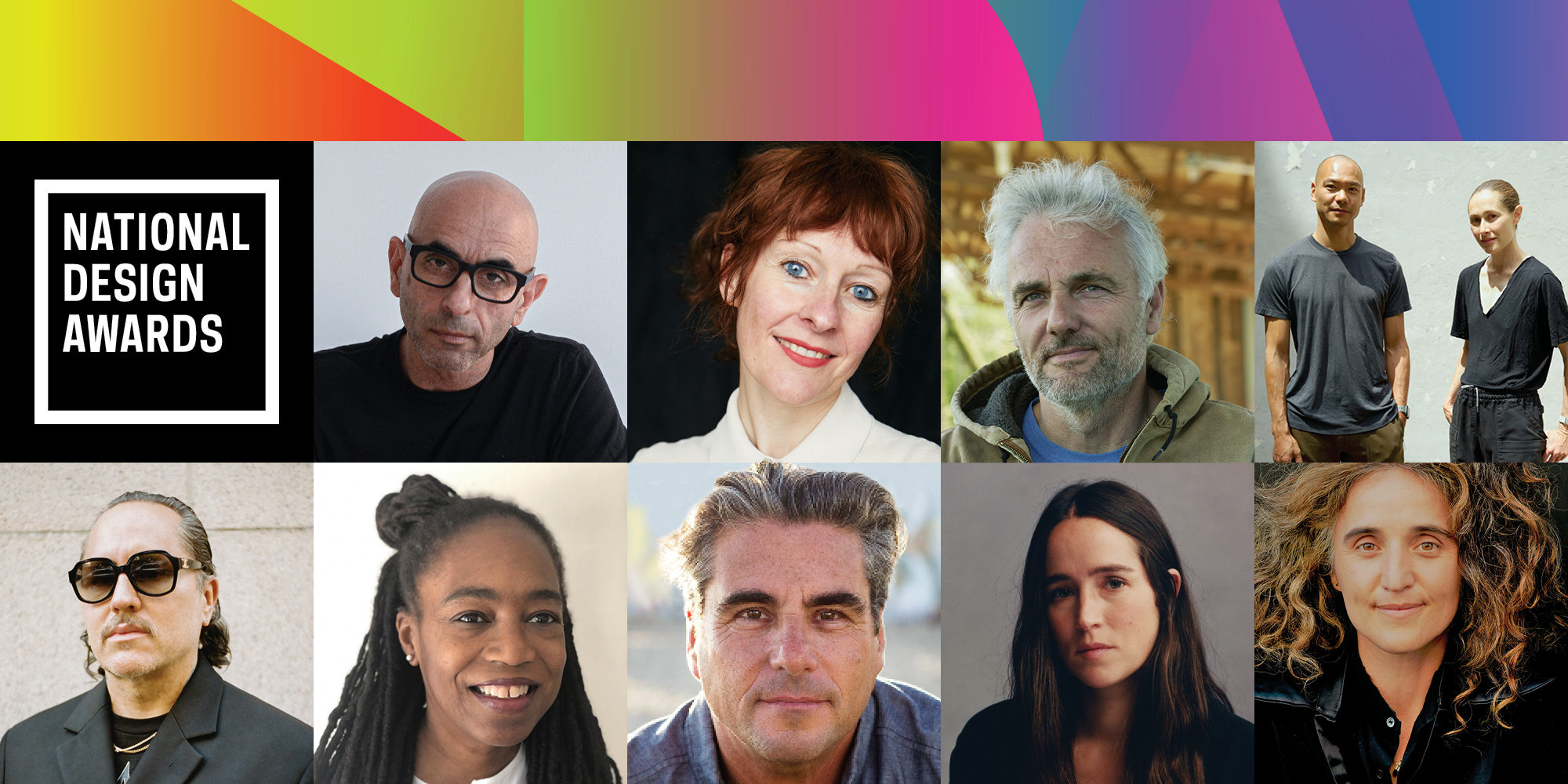
The National Design Awards honor innovation and impact and recognize the power of design to change the world. Established in 2000 as a project of the White House Millennium Council, the National Design Awards bring national recognition to the ways in which design enriches everyday life.
Meet the 2022 Winners
Nader Tehrani
Design Visionary
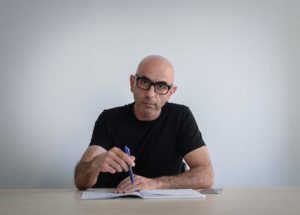
Nader Tehrani is the founding principal of NADAAA, a practice dedicated to the advancement of design innovation, interdisciplinary collaboration, and an intensive dialogue with the construction industry. Tehrani is also former dean of The Irwin S. Chanin School of Architecture at The Cooper Union. Tehrani’s work lies in building bridges between education and practice, creating healthy institutions to ensure equity, democracy, and education for all. Major clients have included: The Metropolitan Museum of Art, Historic New England, Harvard University, Northeastern University, Massachusetts Institute of Technology, Rhode Island School of Design, Georgia Institute of Technology, University of Toronto, and the University of Melbourne. For his contributions to architecture as an art, Tehrani was the recipient of the 2020 Arnold W. Brunner Memorial Prize from The American Academy of Arts and Letters. His work has been recognized with notable international awards in architecture including the Cooper Hewitt 2007 National Design Award in Architecture as part of Office dA and eighteen Progressive Architecture Awards, an unprecedented feat. He has also served as the William A. Bernoudy Architect in Residence at the American Academy in Rome.
WEDEW by David Hertz
Climate Action

Designed by architect David Hertz, WEDEW is a self-contained, transportable, and sustainable water and energy generator that converts biomass into essential human resources. WEDEW operates at the intersection of food, energy, and water and carbon transformation. The processes of biomass gasification and atmospheric water generation have been combined in a single system that creates valuable resources while closing waste streams. WEDEW expands systems thinking beyond the container to entire communities. It operates as a resilience hub allowing micro-grids and micro-economies to form. The biochar byproduct has long-term utility for regenerative agriculture while sequestering atmospheric carbon creating a nexus of goods, services, and resource distribution. WEDEW can successfully produce over 2,000 liters of water in 24 hours at the cost of half a cent per liter. WEDEW creates renewable energy and potable water, and the waste heat is recovered for non-refrigerant cooling while democratizing clean water in a small-scale distributed global solution. Through his work at his Studio of Environmental Architecture, Hertz strives to lessen the built environment’s impacts on the most vulnerable communities and the natural world.
Emily Adams Bode
Emerging Designer
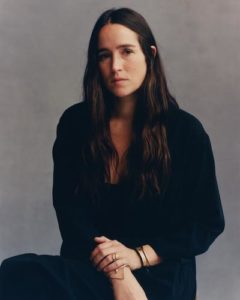
Emily Adams Bode launched her eponymous luxury menswear brand Bode in 2016. Bode expresses a sentimentality for the past through the study of personal narratives and historical techniques. Modern workwear silhouettes united with female-centric traditions of quilting, mending, and appliqué shape the collections. Bode was the first female designer to show at New York Fashion Week: Men’s, with a collection of one-of-a-kind garments composed entirely of antique textiles. Today, with her unique pieces and larger collection of historical reproductions, Bode continues to reinvigorate American menswear through the art of storytelling and preservation. Bode has brought the conversation about sustainability to the forefront of the fashion industry. The brand’s commitment to the preservation of craft and materials and its commitment to making and repairing clothing for generational use, is Bode’s way of righting the industry’s imbalance and addressing overconsumption. Bode has been recognized with numerous awards, including 2021 CFDA Menswear Designer of the Year, 2020 Woolmark Prize: Karl Lagerfeld Award for Innovation, 2019 LVMH Prize Finalist, 2019 CFDA Emerging Designer of the Year, 2019 Business of Fashion 500, and Forbes 30 Under 30.
Rural Studio
Architecture / Interior Design

Through almost three decades of hands-on, place-based teaching and learning, Rural Studio is regarded as one of the oldest, most influential, and well-respected design-build programs in the world. The Studio is located in Hale County, Alabama and led by professor and director Andrew Freear. As part of the School of Architecture, Planning and Landscape Architecture at Auburn University, the core mission of Rural Studio is the education of architecture students who live on site and design and build structures for residents and communities in the under-resourced, persistently impoverished rural region known as the Black Belt. Rural Studio has educated over 1,200 students who have designed and built more than 200 projects in the West Alabama Black Belt. The design-build projects are driven by research into efficient, healthful housing along with the vital community systems necessary to support sustainable rural living. Rural Studio continually questions what should be built, rather than simply what can be built.
Giorgia Lupi
Communication Design

Giorgia Lupi is an information designer and a partner at Pentagram, where she works to create a deeper understanding of the world around us through data, stories, and design. One the world’s leading data visualization experts, Lupi has pioneered and popularized a philosophy of information design called “data humanism.” She designs engaging data-driven narratives across print, digital, and environmental media that create new insight and appreciation of people, ideas, and organizations. Lupi has worked with major clients including IBM, Google, Gates Foundation, Starbucks, UN, and WHO. Her work has been featured in the New York Times, the New Yorker, the Guardian, the Washington Post, NPR, BBC, Time magazine, Forbes, National Geographic, Scientific American, Popular Science, Wired, Vogue, and Vanity Fair, among others. Her work is part of the permanent collection of MoMA and has been exhibited around the world, including at the Design Museum London, Cooper Hewitt, Triennale Design Museum, Palais de Tokyo, and Centre Pompidou. She is the co-author of Dear Data and Observe, Collect, Draw: A Visual Journal. A frequent public speaker, her TED talk on her humanistic approach to data has over one million views.
Felecia Davis
Digital Design
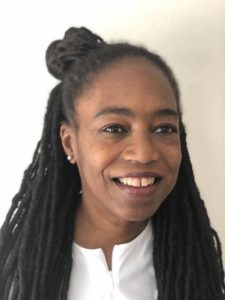
Felecia Davis is a designer and researcher working to re-imagine how we might use textiles in our daily lives and in architecture through computational textiles. Computational textiles respond to their environment via programming, embedded sensors, and electronics, or by designers using the changeable properties of the materials themselves to communicate information to people. Davis develops computational methods and design in relation to specific bodies in specific places engaging specific social, cultural, and political constructions. Davis is associate professor at the School of Architecture at Pennsylvania State University and director of SOFTLAB@PSU. Davis’s work, featured by PBS in the Women in Science Profiles series, connects architecture, art, science, engineering, and design. Her work was part of MoMA’s exhibition Reconstruction: Blackness and Architecture in America. She is a founder of the Black Reconstruction Collective, a not-for-profit that supports design work about the Black diaspora. Davis is principal in her own design firm, FELECIADAVISTUDIO. Davis was recently awarded a 2022 SOM Foundation Fellowship for a collaborative project ‘MycoKnit’ and a 2022 Emerging Voices Award from the Architectural League of New York.
Willy Chavarria
Fashion Design

Willy Chavarria launched his eponymous label in 2015 with a sensitive and cinematic approach. Chavarria takes content from his own upbringing in both agricultural fields and housing projects of the San Joaquin Valley in California and combines it with a high fashion sensibility and love for luxury that he developed during his years designing for Ralph Lauren. He considers his clothing a way to connect personally with the feelings of today’s global citizens. The clothing is intended to be empowering and expressive in its approach to silhouette and fabrication. His concept blends the emotion of art and modern politics into a reactionary story of the human will. The collection has a hard edge with a strong message of anti-hate sentiment including bold statements about racial, economic, and sexual identity. In 2018, Chavarria was named as a finalist for the Woolmark Award. In 2021, Chavarria was a winner of the Vogue Fashion Fund, and in 2022, he was honored by El Museo del Barrio in excellence of fashion. Chavarria has worked for YEEZY as the executive lead of concept and design, and Calvin Klein, where he is now senior vice president of design.
Kounkuey Design Initiative
Landscape Architecture

Kounkuey Design Initiative is an interdisciplinary practice committed to building a more just public realm: one that is complete, inclusive, and resilient. Rooted in landscape architecture, KDI works across urban planning, policy, research, architecture, and civil engineering to expand equity and inclusivity in places that have long been overlooked or actively harmed by traditional design and planning approaches. Founded in 2006 by six then-students at Harvard’s Graduate School of Design, KDI has grown into a sixty-person team led by Chelina Odbert, working from four offices: Los Angeles, Coachella Valley, Nairobi, and Stockholm. KDI works in places where socioeconomic inequity is extreme, environmental risks are high, and public investment is historically low. To address these challenges, the firm designs landscapes of inclusion, including parks, streetscapes, and climate-resilient infrastructure. They also advocate for more equitable public policies, undertake original research to account for injustices in the built environment, and create long-term plans, giving people more equitable access to a thriving public realm, regardless of race, income, gender, sexual orientation, or housing status. KDI has been commissioned by leading philanthropic organizations including The World Bank, UN Habitat, and Swedish International Development Agency; academic institutions such as Harvard University, UCLA, MIT, and University College London; and municipalities and public agencies like Los Angeles Department of Transportation, Government of Kenya, and Philadelphia Parks and Recreation.
CW&T
Product Design
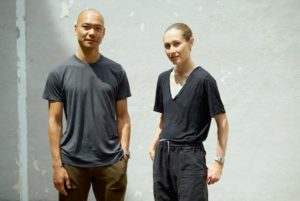
CW&T started as and remains the two-person design practice of Che-Wei Wang and Taylor Levy. Over the last thirteen years, their work has spanned from interactive software to human-scaled tools that enhance our relationships to work, life, and time. The practice centers around an iterative process of sketching, prototyping, testing, writing code, machining parts, and building each edition themselves to assess their intuitions around improving everyday experiences. Projects range from devices that alter the perception of time, an electronics curriculum for artists, an astrological compass for space travelers, to objects engineered to last multiple generations. With backgrounds in architecture, film, and computer science, the duo met at NYU ITP where they began their scale and medium agnostic approach to design. Wang and Levy lecture extensively, and they teach courses on time, electronics, hardware, programming, inflatables, and morphology at Pratt Institute, New York University, and the School for Poetic Computation. Their pedagogy extends into their Brooklyn home/studio where they host office hours to lend a hand or offer insight to anyone interested in figuring out how to make something themselves.
Meet the Jury
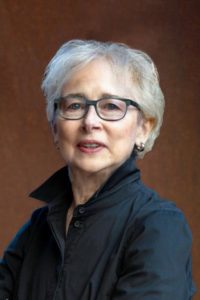
Cheryl Barton
Cheryl Barton, PLA, FASLA, FAAR, LEED AP, is a landscape architect, design science educator, and founder of San Francisco based O|CB Studio. She has established a national reputation for the seamless integration of design excellence and environmental intelligence in her work. Cheryl received a master’s degree in Landscape Architecture from the Harvard Graduate School of Design and holds a BA in Fine Arts and Geology. She is a fellow and past president of the American Society of Landscape Architecture and a recipient of the prestigious Rome Prize. Prior to founding O|CB, Cheryl was director of the Design Studio at EDAW, Inc. and began her career as a designer in the office of Dan Kiley. In 2022 O|CB joined forces with SCAPE Landscape Architecture where Cheryl will support the SCAPE team in design, leadership, and business development. Concurrently, Cheryl will be working on the archives of her forty-year practice.
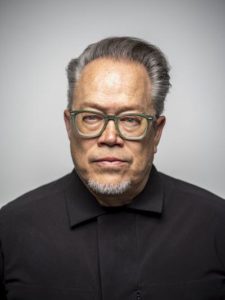
Marlon Blackwell, Jury Chair
Marlon Blackwell, FAIA, is a practicing architect in Fayetteville, Arkansas, and the E. Fay Jones Distinguished Professor at the University of Arkansas. Marlon is the recipient of the 2020 AIA Gold Medal, the Institute’s highest honor recognizing those whose work has had an enduring impact on the theory and practice of architecture. Marlon is a lifetime member of the American Academy of Arts and a National Academy of Design Academician, a 2019 Resident Fellow of the American Academy in Rome, and a 2014 United States Artists Ford Fellow. Work produced in his professional office, Marlon Blackwell Architects (MBA), has received recognition with significant publication and more than 160 design awards including the 2016 Cooper Hewitt National Design Award in Architecture. A monograph of Marlon’s early work, “An Architecture of the Ozarks: The Works of Marlon Blackwell” was published in 2005 and a new monograph titled “Radical Practice,” is set for publication in 2022.
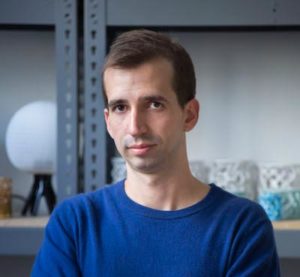
Travis Fitch
Travis Fitch is a multi-disciplinary designer working in architecture, fashion, and product design. Driven by an obsession with pattern, Travis combines geometric research with novel design and fabrication tools to create radical-yet-rational forms. An initial collaboration with fashion house threeASFOUR on their collections Biomimicry and Quantum Vibrations included a series of landmark 3D printed dresses. In 2017, Fitchwork launched Superpattern, a collection of intricately structured, made-to-order lighting and jewelry, with a two-week pop-up in Soho. Travis’s work has been featured in Vogue, the MFA Boston, Cooper Hewitt, Smithsonian Design Museum, and the Philadelphia Museum of Art. As a part time faculty member with the Parsons Textiles MFA, Travis is critically involved in the research, development, and applications of hybrid textiles. Ongoing projects look to expand on these possibilities, and include an investigation in environmentally responsive silk screening, a pair of retrofit historic buildings, and a series of multi-material 3D printed textiles.

Rick Griffith
Rick Griffith is a British-West-Indian collagist, writer, letterpress printer, designer, and optimist futurist based in Denver, Colorado. As a designer, he works at the intersection of programming, policy, and production. He is perpetually working toward new understandings of design’s power and authority over people and everyday things. He is a columnist for PRINTmagazine.com, the two-time programming chair for the AIGA National Conference, and the 2023 Acuff Chair at Austin Peay State University. Rick’s works are collected and exhibited worldwide and can be found in the permanent collections of The Denver Art Museum, The Hamilton Wood Type and Printing Museum, Columbia University’s Rare Book & Manuscript Library, and The Tweed Museum at the University of Minnesota, Duluth. He is a founder and partner with Debra Johnson of the graphic design consultancy MATTER, the designer behind the Black Astronaut Research Project, The Pledge for Spaces, and the Introductory Ethic for Designers and Other Thinking Persons. He co-owns a retail revolutionary bookstore and book club for designers, and DJs a live Internet radio show, Design To Kill.
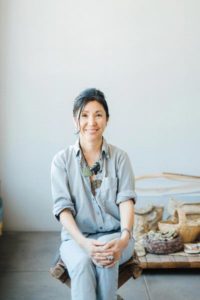
Christina Kim
Christina Kim is the co-founder and designer of dosa, a Los Angeles–based clothing, accessories, and housewares company established in 1984 with a focus on rethinking conventional fashion industry production and sustaining artisan cultures. In-house production enables an evolving system for efficient use of natural resources, recycling, and creative reuse. Christina draws on traditional handwork techniques, particularly in India, Mexico, and Colombia, engaging local artisans and communities in long-term collaborations. Recognized globally for sustainable design practices, Christina was named by Time magazine as one of its Innovators of the Year in 2003, received the Innovation in Craft Award by Aid to Artisans in 2006, the Longhouse Reserve Design Award in 2006, and an honorary doctorate from the Rhode Island School of Design in 2017. She received Cooper Hewitt’s 2018 National Design Award for Fashion Design.
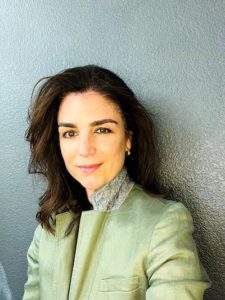
Susana Rodríguez de Tembleque
Susana Rodríguez de Tembleque is an award-winning designer, innovator, and storyteller. She is the VP of design of IBM Research, the collective of laboratories in charge of inventing what’s next in computing. Susana’s mission is to create an excellent, differentiated, end-to-end experience for IBM Research. She collaborates with scientists, engineers, designers, and developers to bring to life the most cutting-edge technologies. Prior to this role, Susana was the VP of brand experience for IBM Watson, where she was responsible for advancing IBM’s positioning in AI. Before joining IBM, Susana was the creative director of retail at Apple, where she built a first-of-a-kind cross-functional discipline to design the future experience of Apple retail. She was also founder and executive creative director of Studio Partners, where she collaborated with clients to create bold brand experiences, and she was executive creative director at SYPartners, where she led award-winning design for clients including IBM, Apple, Under Armour, and Starbucks.
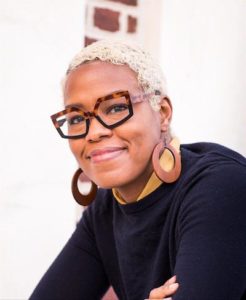
Raja Schaar
Raja Schaar, IDSA, is program director and assistant professor of product design at Drexel University’s Antoinette Westphal College of Media Arts and Design. She also co-chairs IDSA’s Diversity, Equity, and Inclusion Council and formerly served as the education director. Raja is an industrial designer with an extensive background in museum exhibit design and healthcare design who is passionate about ways design can make positive impact on social inequities at the intersections of health equity, environmental justice, and STEAM education. Raja studies the ethical implications of design and technology through her research, and teaches through the lenses of science fiction, speculative design, and social entrepreneurship. Her current projects address biases in maternal health through wearable technology and participatory design; community-based co-design for engaging black girls and underrepresented minorities in STEM/STEAM through design, technology, and dance; and biologically-inspired design, sustainability, and climate justice. Raja holds degrees from Georgia Tech and the School of the Art Institute of Chicago.
2022 Special Thanks
The National Design Awards are made possible with major support from

Major support is also provided by Helen and Edward Hintz and Shelby and Frederick Gans. Generous support is provided by Alexandra and Paul Herzan, Crystal and Chris Sacca, and Lisa Roberts and David Seltzer.
Additional support is provided by Agnes Gund, Amita and Purnendu Chatterjee, Esme Usdan and James Snyder, Jon C. Iwata, Keith Yamashita, Kim and Mac Schuessler, Margery and Edgar Masinter, Richard M. Smith and Dr. Soon-Young Yoon, and Cooper Hewitt’s Board of Trustees.
National Design Award trophies are created by The Corning Museum of Glass.
